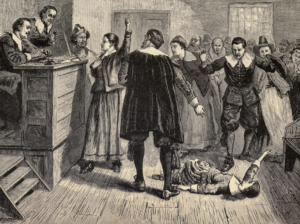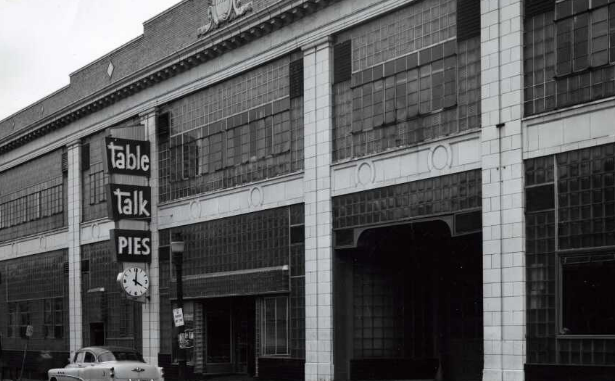Delve into the rich tapestry of history as we explore a fascinating array of traditions that have withstood the sands of time, originating in the 1800s and continuing to shape our cultural landscape today.

Thanksgiving Day Parade: Macy’s Spectacular Tradition
One of the most iconic and enduring traditions that emerged in the late 1800s is the Macy’s Thanksgiving Day Parade. Beginning in 1924, this annual extravaganza features giant character balloons, floats, and performances, captivating generations of spectators and becoming an integral part of Thanksgiving celebrations.
The Kentucky Derby: A Run for the Roses Since 1875
The “Run for the Roses,” also known as the Kentucky Derby, debuted in 1875 and remains one of the most celebrated horse racing events worldwide. Held on the first Saturday in May, this tradition blends sport, fashion, and the thrill of the race, showcasing the enduring elegance of the late 19th-century spectacle.
Christmas Caroling: Spreading Joy for Over a Century
The heartwarming tradition of Christmas caroling traces its roots back to the 1800s. Stemming from medieval folk plays and traditions, caroling became popular in England and eventually crossed the Atlantic to the United States. Today, groups of singers continue to spread holiday cheer with timeless carols.
Baseball: America’s Pastime Since the 19th Century
Originating in the mid-1800s, baseball quickly became known as “America’s Pastime.” The establishment of Major League Baseball in 1869 marked a pivotal moment, and the sport has since evolved into a cultural phenomenon, ingrained in the fabric of American traditions.
Independence Day Celebrations: A Fireworks Tradition
The tradition of celebrating Independence Day on the 4th of July dates back to the late 18th century, but the widespread use of fireworks to mark the occasion gained popularity in the 19th century. Today, fireworks displays illuminate the skies, symbolizing the enduring spirit of freedom.
The Rose Parade: Floral Elegance Since 1890
The Tournament of Roses Parade, initiated in 1890, is a New Year’s Day spectacle featuring elaborate floats adorned with vibrant flowers. This Pasadena tradition showcases meticulous craftsmanship and artistic expression, blending the beauty of nature with the pageantry of celebration.
College Football: A Gridiron Legacy
College football, with its roots in the late 1800s, has become a beloved American tradition. The annual Rose Bowl, inaugurated in 1902, is a testament to the enduring popularity of collegiate football and its cultural significance, attracting fans from across the nation.
The Boston Marathon: A Footrace Through Time
Established in 1897, the Boston Marathon is the oldest annual marathon in the world. This enduring tradition attracts elite runners and participants from various backgrounds, embodying the spirit of perseverance and community that has characterized the race for over a century.
The Nobel Prizes: Honoring Excellence Since 1901
Instituted by the will of Alfred Nobel in 1895 and first awarded in 1901, the Nobel Prizes honor outstanding contributions in the fields of physics, chemistry, medicine, literature, peace, and economic sciences. This tradition has recognized individuals and organizations whose work has left a lasting impact on humanity.
The Prom: A Rite of Passage Since the Late 19th Century
The tradition of high school proms began in the late 19th century and has evolved into a rite of passage for students worldwide. This glamorous event, characterized by formal attire and dancing, continues to be an enduring cultural tradition that marks the transition from adolescence to adulthood.
Christmas Tree Lighting Ceremonies: Illuminating the Holidays
The practice of lighting Christmas trees dates back to the 18th century, but the tradition gained widespread popularity in the 19th century. Today, Christmas tree lighting ceremonies in towns and cities globally signify the onset of the holiday season, fostering a sense of community and joy.
Groundhog Day: A Quirky Winter Forecast Tradition
Groundhog Day, observed on February 2nd, traces its roots to German folklore and has been celebrated in the United States since the 1800s. The tradition involves predicting the arrival of spring based on whether a groundhog sees its shadow, adding a whimsical touch to winter festivities.
May Day Celebrations: Welcoming Spring Since the 19th Century
May Day, with its roots in ancient spring festivals, gained popularity in the 19th century as a celebration of the arrival of spring. The tradition includes maypole dancing, flower crowns, and various festivities, symbolizing the rejuvenation of nature.
Easter Egg Hunts: Hidden Delights for Generations
The practice of Easter egg hunts, originating in the 19th century, has become a cherished tradition. Children search for hidden eggs, symbolizing rebirth and renewal, making it a delightful and enduring part of Easter celebrations.
Wimbledon Championships: Tennis Tradition Since 1877
The Wimbledon Championships, inaugurated in 1877, stand as the oldest tennis tournament in the world. This prestigious event, marked by grass-court matches and strict dress codes, has become a symbol of tennis tradition and sporting excellence.
Oktoberfest: A Bavarian Tradition in Full Swing
Originating in Munich in 1810, Oktoberfest has grown into the world’s largest beer festival. This lively tradition, celebrated annually in September and October, features beer, traditional Bavarian cuisine, and vibrant cultural festivities, drawing millions of visitors.
The Nutcracker Ballet: A Holiday Classic
Premiering in 1892, “The Nutcracker” ballet has become a timeless holiday classic. Choreographed by Marius Petipa and Lev Ivanov with a score by Pyotr Ilyich Tchaikovsky. This enchanting tradition continues to captivate audiences with its magical storytelling and iconic dance sequences.
The Melbourne Cup: Horse Racing Excellence in Australia
Established in 1861, the Melbourne Cup is Australia’s most prestigious horse race. This revered tradition, known as the “Race that Stops a Nation,” combines high-stakes racing with fashion and elegance. This, attracting attention both nationally and globally.
Annual State Fairs: A Showcase of Agriculture and Entertainment
State fairs, originating in the 19th century, are annual gatherings that celebrate agriculture, community, and entertainment. These events showcase livestock, agricultural products, and feature attractions, concerts, and competitions, providing a rich tapestry of tradition and entertainment.
Dickensian Christmas Markets: Victorian-Inspired Festivities
Inspired by Charles Dickens’ tales of Victorian Christmases, Dickensian Christmas markets emerged in the 19th century. They come featuring period costumes, carolers, and festive stalls. This recreates the charm of a bygone era and continues to enchant visitors during the holiday season.
Conclusion: Threads of Time Unveiled
As we traverse the corridors of time, these enduring traditions weave a vibrant tapestry that connects generations. From sporting events and festive celebrations to cultural spectacles. These traditions from the 1800s continue to stand as testaments to the resilience and timeless appeal of human customs.

